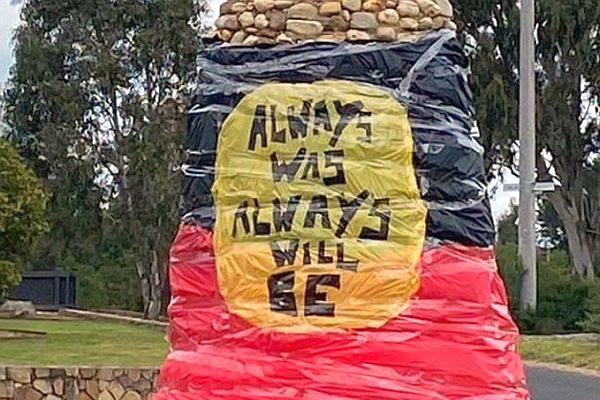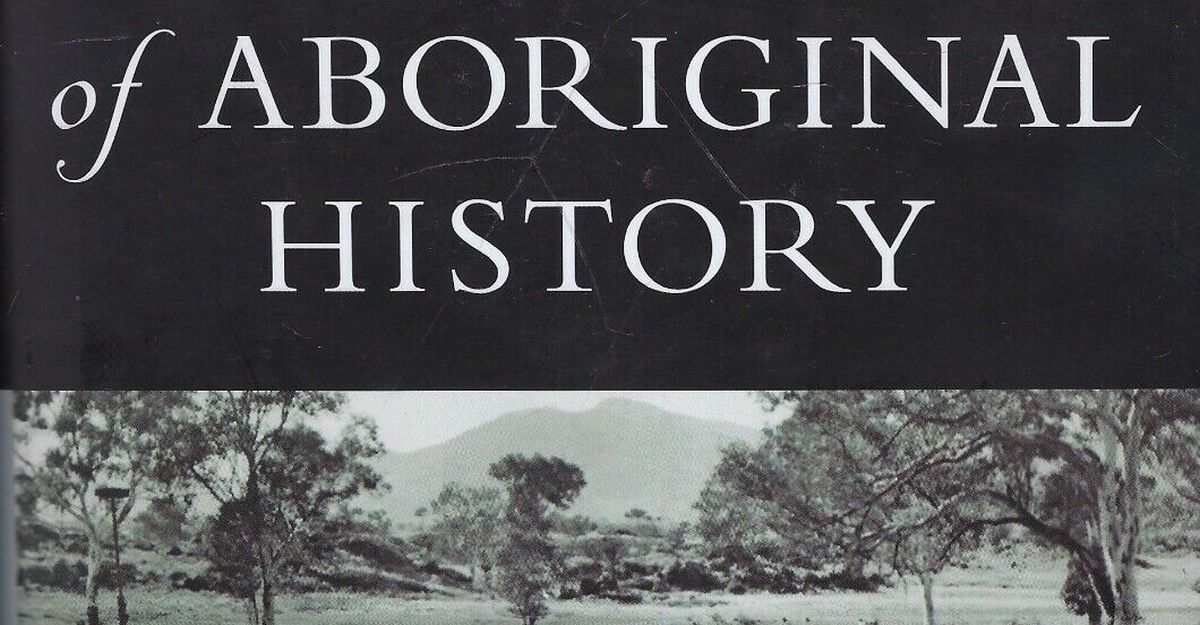On 16 June 2020, in the midst of the Australian Black Lives Matter protests, the Wellington Shire Council in Victoria’s Gippsland met to vote on the removal of monuments dedicated to the colonist Angus McMillan. As a Gunai community member I, Aunty Doris Paton, felt compelled to take the opportunity to have a say on this with Wellington Shire Councillors. I wanted to get the facts about these cairns written on the record for our people. I asked the Councillors ‘to be courageous for our Ancestors, for our Elders, and for our future generations. The impact of colonialism on our lives over the generations has been profound, our stories need to be told. To heal.’ This was an opportunity for the Wellington Shire Councillors to be on the right side of history.
We speak here as researchers linked through our collaboration on Gunaikurnai and Gippsland histories. Dr Aunty Doris Paton is a Gunai Elder and educator and Jessica and Beth are settler researchers. Our aim is to centre Aboriginal voices in the debates around the future of the McMillian cairns for they have been dismissed and disrespected by the Wellington Shire Council. We wish to explain why the arguments presented for retaining the cairns cannot be justified.
The opportunity to break with the past, during a moment of global reckoning on the treatment of Bla(c)k, Brown and Indigenous people, was not taken by the Wellington Shire Council. The motion, proposed by Councillor Carolyn Crossley, was to remove the two cairns to McMillian on Wellington Shire Council land at Rosedale and Stratford and to seek approval for the removal of seven other McMillian cairns on land not owned by the council. It was a proposal to work with the Gunaikurnai on ‘an appropriate way to recognise’ the regions’ shared history. Six, against four, councillors voted against the motion. The result was contrary to the groundswell of community support for the removal of the cairns. Of the 250 written community submissions, the majority supported the removal motion; of the ten community presentations, eight asked the councillors to listen to the Aboriginal community and to remove the cairns.
One of the Councillors who voted against the motion claimed the cairns represent an important part of local history and called for more ‘expert’ advice before making a decision. Gunaikurnai people are the experts. Gunaikurnai people know how these monuments have a deep, intergenerational impact on their community, and they shared their expert testimony with the council. The call for more information was only another stalling technique. The Wellington Shire Council has long been involved in discussions with the community over the fate of the cairns, and this debate has been brewing for decades.


The McMillan cairns were built in 1926. The unveiling procession the following year was enjoyed by the men who had initiated their construction – a group connected to proponents of eugenics, nationalism and imperialism and vocal supporters of the policy to keep Australia white. When the procession arrived at Sale, the townspeople were thanked for ‘their assistance’ in forming local committees to collect funds to pay for the cairns, their involvement relegated to a supporting act (1). Lord Somers, the Governor of Victoria, who took the ceremonial role of unveiling each cairn, used the opportunity to share his views, including his hope that ‘they would keep Australia white, and not allow coloured races to take control’ (2). At Lucknow, Somers declared that ‘Victoria was greatly indebted to its pioneers for what they had done in opening up the country for settlement.’ He hoped that, ‘Young Victorians, if they studied the history of their country, would get an inspiration to emulate the deeds of the pioneers’ (3).
Behind the campaign to remove the McMillian monuments is GLaWAC (Gunaikurnai Land and Waters Aboriginal Corporation) who, along with a representative of Gippsland and East Gippsland Aboriginal Corporation (GEGAC), made a presentation to the council on behalf of the Gunaikurnai people. It is GLaWAC’s position that:
the cairns represent a celebration of history where colonists arrived on Gunaikurnai land and committed forms of genocide, social engineering and legalised relocation. We understand that colonists also did, in the eyes of many, good things. The symbolism of these cairns to the first people is significant. It is an issue that has been clearly on the community agenda for quite a while. We are happy to discuss the best way forward with the shire and Government to ensure a more appropriate recognition of Gippsland History including the non-Aboriginal history. We do not propose to pull all of the cairns down but significant and obvious actions, including pulling down or reinterpreting, must be agreed between us.
Gunaikurnai community member and Bundjalung woman Ruth Walker was among those who made a presentation to the council before the vote. She stated: ‘I feel it’s really important to have them removed. In order for us to move forward we need to address our past, and that’s not just ours it’s yours … it is very painful to have these monuments up’. Ruth Walker raised the question of the value of the cairns, telling councillors: ‘I’m not sure why they are there and what their purpose is.’
Confusion about the purpose of the cairns appears to be widespread. Speaking in opposition of the cairns’ removal, one presenter claimed that they were established by the ancestors of local settler families, but this is not true. The idea to erect the cairns was part of a wider monument project devised by a group of powerful Melbourne-based bureaucrats that included Director of Education Frank Tate (1). The purpose of the memorials to McMillan was not to express local pride in McMillan’s ‘discovery’— although the locals may have been encouraged to believe this —but to consolidate a particular narrative about white settlement in the region. They are not historically accurate, as the sites were chosen for visibility in prominent locations. The monuments say more about powerful men’s desire for imperialist heroes and settler legitimacy than they do about McMillian. And, as Councillor Crossley has pointed out: ‘if we leave them here, they say something about us.’
Since the 1920s, a fuller picture of settler violence in Gippsland has been growing, due in no small part to the work of GEGAC and GLaWAC, who in 2018 were involved with the documentary film The Warrigal Creek Massacres that examined violence led by McMillian. Yet, there is much still to change. We find it worrying that the language of Lord Somers’ 1927 speech was repeated in the Wellington Council chamber when one of the community presenters spoke of McMillians’ ‘achievements’ in ‘opening up’ Gippsland. Historically, phrases like ‘opening up’ were ubiquitous in school textbooks – euphemisms for the wilful erasure of the truth of violent dispossession of the Gunaikurnai by McMillian and his ‘highlander brigade’.
Despite what was taught in schools, Aboriginal people have grown up learning the truth of colonial violence. Aunty Doris Paton recalls that ‘we were confronted with racism in our schooling experience. It was worse for me as a child, my father told us of the history of our people and the massacres that happened on our country. I always got into trouble for telling what my father told us about our history. Even then I knew what they were teaching us about McMillan was not true.’ This experience has been, and continues to be, repeated and shared across Victoria by Aboriginal children in classrooms who have to listen to stories of explorers and settlement that they know to be untrue.
The word pain was used again and again in the community submissions and presentations to the council that described the impact of the cairns on Aboriginal people who pass the monuments daily. Altogether, there are eighteen cairns to McMillian in Gippsland embedding his identity and deeds on the landscape. Many are located close to cultural places, pathways where the Gunaikurnai traversed the country long before McMillan came. In a presentation to the council, Rob Hudson, Gunaikurnai Ngarigo Monero man and manager of the Krowathunkooloong Keeping Place at Bairnsdale, told them that ‘we all must accept the past, but also acknowledge the past as well. Removing the monuments will not get rid of history but will make us a stronger people.’ As Councillor Darren McCubbin pointed out, McMillian’s involvement in massacres has led to the removal of his name from school sports teams, honour boards, and TAFE campuses across other Gippsland shires. Removing McMillian’s name from these places has caused no harm, but the Gunaikurnai in the Wellington Shire continue to feel pain and grief from the ongoing presence of the McMillian cairns.
In the midst of the Black Lives Matter protests of June 2020, when Aboriginal activists rallied thousands in Australia’s capital cities to protest the lack of government action on Aboriginal deaths in custody and structural injustice, the Wellington Shire Council’s decision to cling to outdated narratives of settler colonial conquest displayed a profound lack of empathy and willingness to face the facts of the past and their legacies. This could have been an occasion of great relief and optimism for the shire and the start of conversations with GLaWAC about how better to commemorate and recognise Gunaikurnai culture. The campaign will continue. The Gunaikurnai’s submissions remain on the record, testimony to their pain and grief, but also to the desire to move forward with the Wellington Shire Council towards a more reconciled community.
This was an opportunity to tell the truth about the impact of Gippsland’s history for our Gunaikurnai people. It is somewhat ironic that the Councillors see the symbolism of these cairns as part of them. In 2014, Steaphan Paton, my son held an exhibition to tell the truth of the story of McMillan and the Gunaikurnai. ‘Wallung Githa Unsettled – Nindidana Wallung – our stones. Thindu wurk-wurk githa – This land is mine. Thindu wallung githa – These rocks are mine.’
Notes:
(1) Gippsland Times, ‘Discoverer of Gippsland: Memorial Cairns Unveiled’, 7 April 1927, p.1.
(2) Age, ‘Governor in Gippsland’, 9 April 1927, p. 18.
(3) Age, 6 April 1927, quoted on the Monument Australia website.
(4) See Tom Griffiths, Hunters and Collectors: The Antiquarian Imagination in Australia, (Cambridge University Press: 1996) pp. 158–191, for an examination of the ‘memorial movement’ in Victoria in the 1920s.






